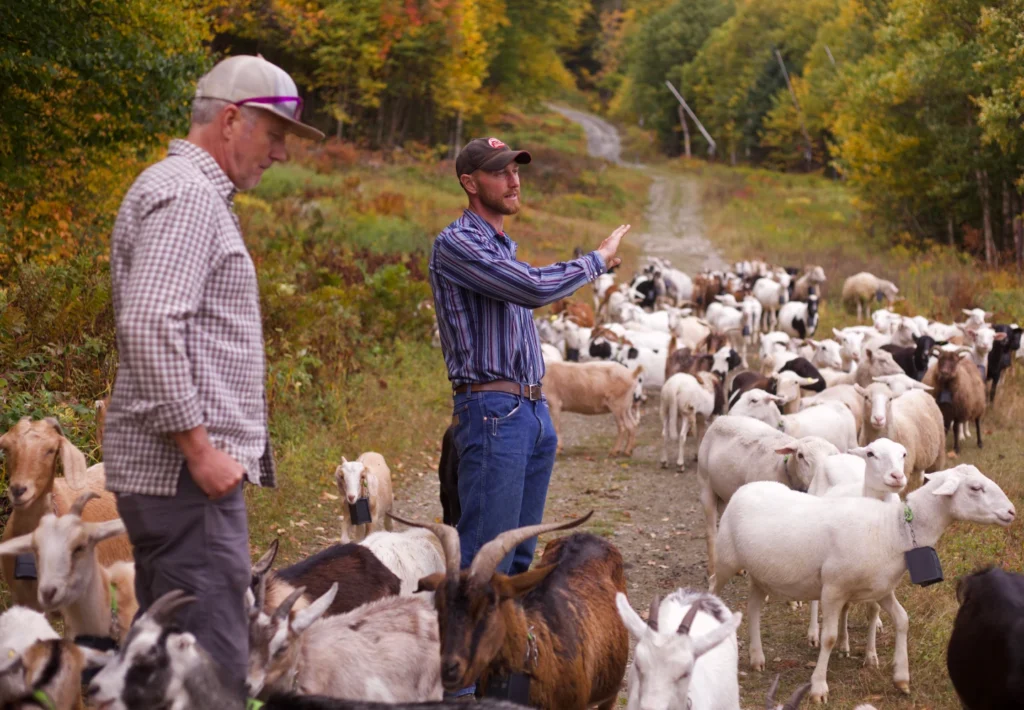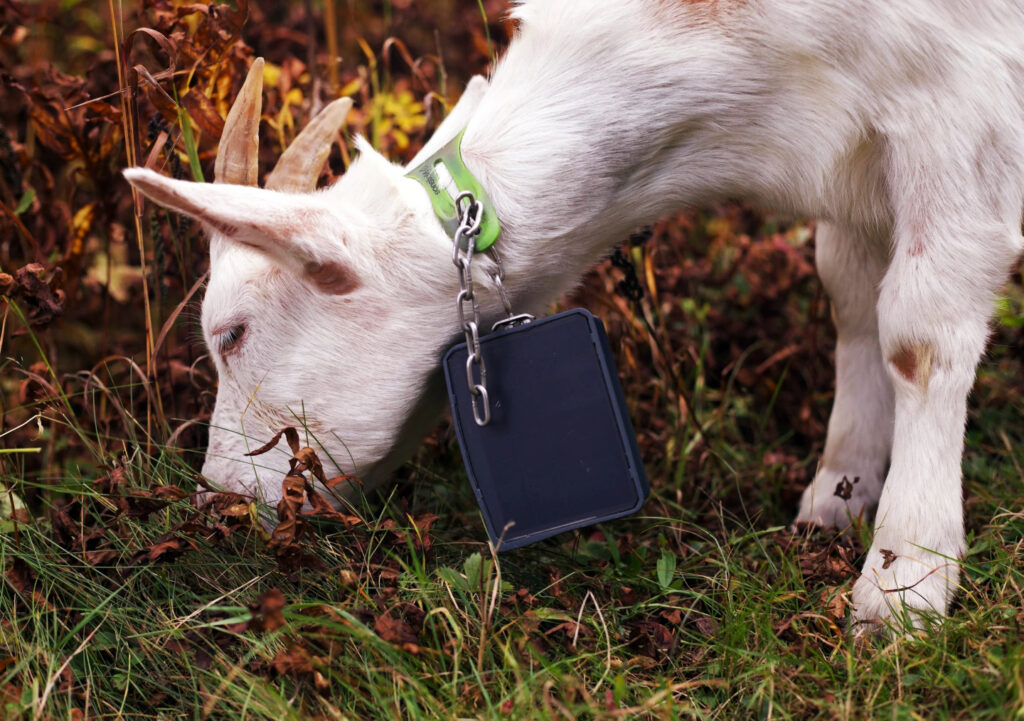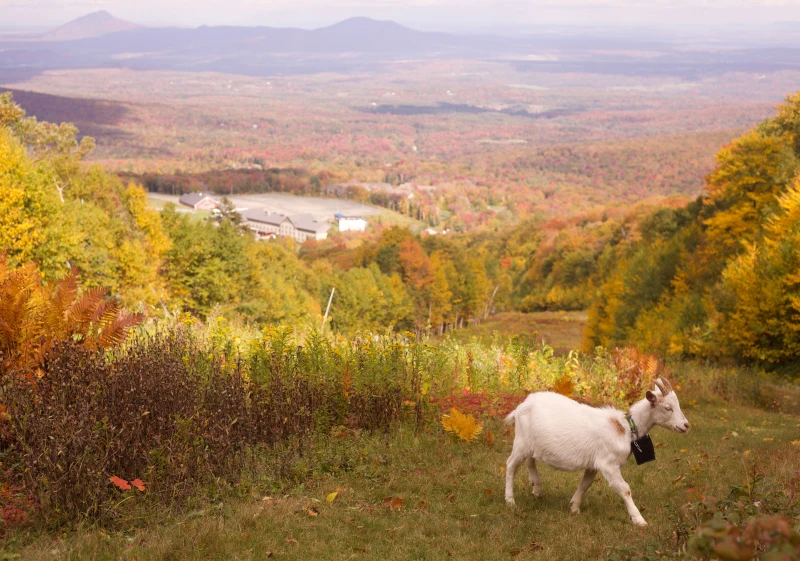Goatscaping
Months before the first snow beckons skiers, sheep and goats are hitting the slopes in Vermont. Dozens of animals have been mowing down overgrown vegetation at Jay Peak near the Canadian border. They’re expected to clear 25 acres over a five-week stint, an experiment officials say is worth a try on part of the 300 acres that need to be mowed. The goal is to gradually reduce the reliance on gas-powered mechanical mowers. “This year has proven that it can be done and be done successfully,” said Andy Stenger, director of mountain and base area operations. “They’re great employees. They take a lot of lunch breaks, but that’s kind of the idea.” The animals wear special collars that emit a noise if they get too close to an invisible fence and deliver a mild shock if they cross the barrier. The collars also send GPS data to the herd’s owner. “I can see where they’re spending most of their time. And I also get a heads up if there’s a sick animal.
The term “Goatscaping” means grazing goats (and sometimes sheep) to manage vegetation growth in an environmentally sound manner. Goatscaping greatly reduces the use of toxic herbicides, and because the goat digestive process effectively sterilizes seeds and reproductive plant matter, they are an ideal treatment for invasive plants. Our goats eat around birds nests, avoid leaves containing a cocoon or chrysalis, and allow animals like turtles, toads and small mammals to move out of the way. Traditional landscaping destroys habitat and often kills these creatures.
More than 25 years ago, a New Hampshire electric company used 1,000 sheep to clear vegetation under power lines. In 2010, the University of Georgia brought in goats to control an invasive plant overtaking a section of campus. And the Nashville Chew Crew, a herd of sheep, has been working for the city’s parks department since 2017. New York City has also used goats to clear parts of its parks. Ricci said his goats and sheep spent a busy summer cleaning up backyards, reclaiming abandoned farmland, gobbling up poison ivy and removing invasive species from the grounds of a retirement community. Further south, Magic Mountain ski area used a herd from Slippery Slope Goats last year to do its mowing. In both cases, the collaboration was facilitated by the Agritech Institute for Small Farms, an organization working to increase access to advanced technology that can help small farms stay in business.
Goatscaping reduces the carbon footprint of vegetation control, reduces erosion and increases a site’s capacity to hold water, Ricci said. The cost per acre is similar to mechanical mowing, though he acknowledges the animals are slow. “Conventional methods, they’re covering this whole entire site in about 10 days,” he said. “So these guys work significantly slower than weed whackers do.” But employees and visitors at Jay Peak have enjoyed the friendly herd, Stenger said. “It’s “It’s a lot of fun to have them on the mountain,” he said.
The hills are alive with Goats
What do you get when Lincoln, Washington, Jefferson, and Roosevelt fall in poison ivy?
Mt. Rashmore.
There was an Irish botanist that was trying to cross a four leaf clover with poison ivy.
He was hoping for a rash of good luck.
What is a mountain goats favorite name?
Cliff.
A farmer heard some funny noises from one of his goats.
Turns out the goat was just kidding around.
October 2nd Birthdays
1987 – Camilla Belle, 1988 – Hina Khan, 1991 – Samantha Barks, 1971 – Kelly Ripa
1995 – Brendan Meyer, 1951 – “Sting” 1896 – Bud Abbott, 1890 – Groucho





